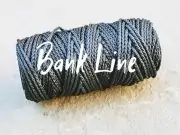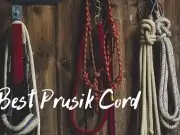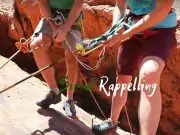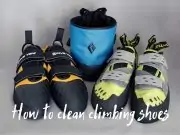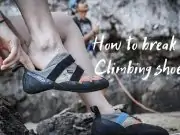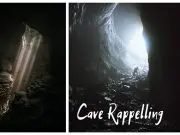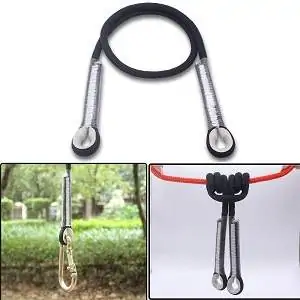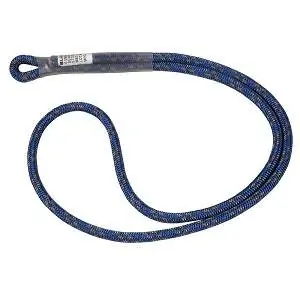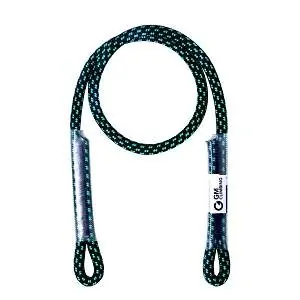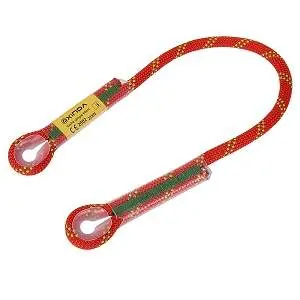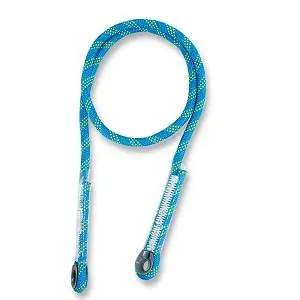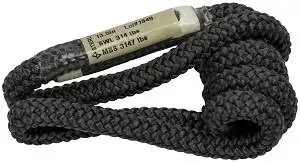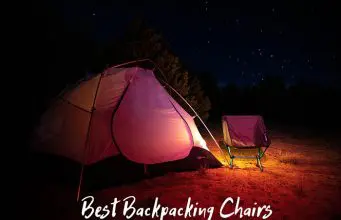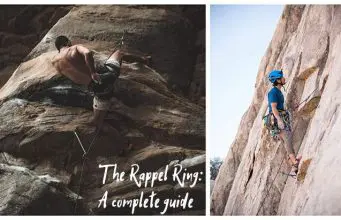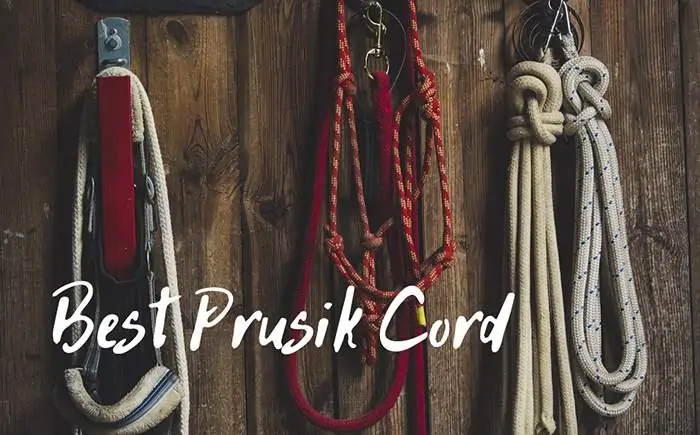
I wanted to talk a bit about the Prusik Cord because I know that some of you out there are probably a bit confused about this particular piece of gear and what it stands for. A Prusik Cord relies on one of the most popular climbing knots out there, namely the Prusik Knot. I’ve already written a piece about climbing knots and how to tie them, so make sure to give that a read as well if you’re interested.
Staying on the topic of Prusik cords, these are generally used to create personal anchors, or they serve various applications in rock climbing and tree work. It’s never a bad idea to pack some of these climbing utility cords with you, especially since they usually take up very little space and are relatively lightweight. The thing is, you can make these yourself if you have the skill and know-how, or you can buy them pre-sewn and ready for action.
You can’t go wrong with either, to be honest, but if you’re more of a beginner in this field, I’d definitely recommend buying pre-sewn prusik cords. You’ll save a bit of time tying them up and preparing them yourself, and you can be sure that the cord used to create them has the right length and thickness. Moreover, since they are pre-sewn, there’s no risk of the knot coming undone, which is definitely a plus in my book.
What’s the Best Prusik Cord?
If you’re looking for the best cord to make Prusik utility loops yourself, you’ll find some useful information towards the end of this article. For now, I’m going to suggest some reliable pre-sewn Prusik cords that have already proven their reliability.
1. Boaton Climbing Utility Cord.
The Boaton climbing utility cord represents an affordable yet safe solution if you’re looking for a pre-sewn cord. It offers reliability and peace of mind, as its stitchings are covered with a heat shrunk plastic tube for a plus of durability. You can use this prusik cord for a variety of applications, including rock climbing, tree work, rappelling, or anchor creation.
Boaton’s offering was created using a durable 10mm Polyamide cord, and it is available in two sizes: 24-inch and 40-inch. I think the best part about this product, apart from its pre-sewn nature, is that it was designed to do as little damage as possible to your main rope. It can also work in both directions depending on how you want to use it. It’s a versatile and dependable product that truly takes the hassle out of tying your own prusik knots.
The stitching is top-notch, and the metal “grommet” ends are definitely a welcomed feature. The price is quite affordable as well, but that’s pretty much the case with all of these pre-sewn cords.
2. Bluewater Dynamic Prusik Cord (Sewn Loop).
This pre-sewn prusik loop by Bluewater Ropes has a diameter of 6.5mm, and it is available in two colorways such as Blue and Brown. It also comes in different sizes such as 11-inch, 20-inch, and 44-inch, each varying in price depending on your choice. What’s interesting about this pre-sewn Prusik cord is that it has a tensile strength of 3,200lbf, which makes it incredibly strong.
Moreover, this is a dynamic Prusik cord, which means that it elongates to a certain degree depending on how much force you apply to it. For instance, at 300 lbf, it will elongate by 19.4%, while a force of 600 lbf will cause a 29.3% elongation.
I should also mention that this cord is sewn with 277 polyester thread and that the sewing job itself looks very well done.
3. GM Climbing Prusik Eye-to-Eye Pre-Sewn.
One of the most important things you need to consider when using a Prusik cord is abrasion resistance. This offering by GM Climbing is one of the sturdiest yet, as it features a double braid and a braided core complemented by a braided cover. This makes the cord quite firm, so be ready for that, but it also ensures that durability won’t be of any concern, not for a long time.
Furthermore, the loop ends are machined-sewn professionally and covered with a heat-shrink plastic sheath. I’ve used one of these cords in numerous situations and I have to say they do a very good job given their price.
The cord measures 30″ in length and 8mm in thickness, and it boasts a strength rating of 4,500lb of force. It can be used for self-rescue situations, tandem rappelling, back up for belaying or ascending assistance. Apparently, arborists use them quite a bit as well.
4. Kissloves Outdoor Pre-Sewn Prusik Cord.
Kissloves is actually a pretty good brand in the climbing and rappelling segment. Their pre-sewn alternative to Prusik knots comes in three colors: orange, red, and blue, each featuring a reliable polyamide-build as well as heat-shrunk plastic covers over the actual sewing spot.
As you might have noticed by now, all of these cords are similar in design. However, they differ when it comes to strength and elongation levels. As far as strength goes, this offering can withstand 22kN or 4,850lb of force. It is resistant to moisture and abrasion, and it can also replace other knots such as French knots or Bachmann knots.
The length is either 24 inches or 40 inches, and the diameter is 10.5mm.
5. NewDoar Prusik Swen Cord Eye-to-Eye.
Alright, this is the last one I can recommend right now. it’s from a company named NewDoar, and it comes in either 24′ or 47′ variants. It’s also available in blue or red, just in case color matters to you.
The strength rating on this pre-sewn cord is 22kN or 4,850lb. From what I can gather, the cord is double-braided, which should ensure some degree of abrasion and moisture resistance. The diameter is 10.5mm, which makes it very similar to the solution I presented above.
Pre-sewn Prusik cords are remarkably similar, as they all share a common design. All you have to do is pick the one that inspires more confidence. At the end of the day, each one of the five products on this list should perform admirably.
Should you remove the plastic wrap that surrounds the stitching?
Some of you have been asking about the plastic wrap that envelops the stitching on these kinds of products. Just in case you were thinking about removing it, let me tell you why that’s an extremely bad idea. It’s true that the stitching on Prusik cords is usually high-quality. It’s done automatically using machines, but that doesn’t mean that the cord material itself is indestructible.
The plastic heat-wrap is there to ensure abrasion resistance, and to guarantee that the stitching will not come undone even when a high amount of force is applied to the cord. You should never remove that plastic even if you think it will make things easier for you. Maybe the cord itself would be easier to set up without the cover, but you would be sacrificing safety, which I would never condone.
The Sterling Hollowblock 2 Loop – A better alternative?
There is a slightly more intriguing alternative to a conventional pre-sewn prusik cord, and that’s the Sterling Hollwblock, which has now reached its second generation. While it’s just as grippy as the original, this improved version of the Hollowblock is now significantly more durable and resistant to abrasion.
The Hollowblock is a 6.8mm hollow braid made using aramid fiber, which is sewn into a loop. The product is available in 13.5-inch and 19-inch variants, and it boasts a breaking strength rating of 14kN. Depending on your needs, you might want to use the 13.5′ version of prusiks, while the 19″ variant might be better suited for french prusiks or Klemheists.
Just make sure to check if your prusik or hitch is properly dressed when using this, as the HollowBlock might tend to slip a bit otherwise. This product is generally intended to work on ropes that are at least 7mm thick.
So is the Hollowblock better than conventional pre-sewn prusiks? I’d say that it depends on the type of setup that you’re going for. Personally I’ve worked with both types and I wasn’t disappointed by either, but I have found that the Hollowblock can be a bit more versatile in general.
What is the best nylon accessory cord for creating knots?
Sometimes you might not want to rely on a pre-sewn cord. Maybe you actually want to tie the knots yourself. In that case, you’ll need to use a durable nylon accessory cord, but it’s important to know what size to go for. If the cord is too thin on a thicker rope, the hitch will become too grabby and you might not be able to manage it properly after you put some load on it. If the cord is too thick, it won’t grab properly and you’ll have to use more wraps.
While I can say that you can theoretically start out with a diameter of 4mm, I definitely wouldn’t recommend that for Prusik knots.
One rule of thumb is to go 3mm lower than the diameter of the main rope. This will ensure that the Prusik actually holds on properly. In short, 6mm is most often used for personal prusiks, but 5mm or 7mm can work as well. The reason why I wouldn’t recommend 4mm is due to durability. You’ll want a cord that will be able to withstand some abrasion, and 4mm is simply a bit too thin for that in my opinion.
As far as tensile strength goes, you should look for something between 7 to 10 kN for cords that are between 6 and 7mm. There’s a wide variety of cords available right now, and I’d definitely recommend buying your accessory cord from brick-and-mortar stores. This will give you the chance to check if the cord folds well or not, which is an indicator of how well it will work for a prusik. Just take a piece of cord and fold its two sides between your fingers. If the cord folds completely flat, it will work very well for a prusik. If there’s a large eye at the bend, the cord won’t grab as well and you need to keep looking.
Conclusion.
There are three main ways you can go about finding good prusik cords. You can tie them yourself using accessory cords, you can buy pre-sewn prusiks, or you can use the Sterling Hollowblock as an alternative to both.
Your choice might vary depending on your experience level, your affinity for knots, and your principles. I can’t really say that I’d recommend one solution over the other, but I will say that pre-sewn prusiks are quite reliable and practical nowadays. The decision is yours, of course, and I do hope that I managed to help you reach it.




